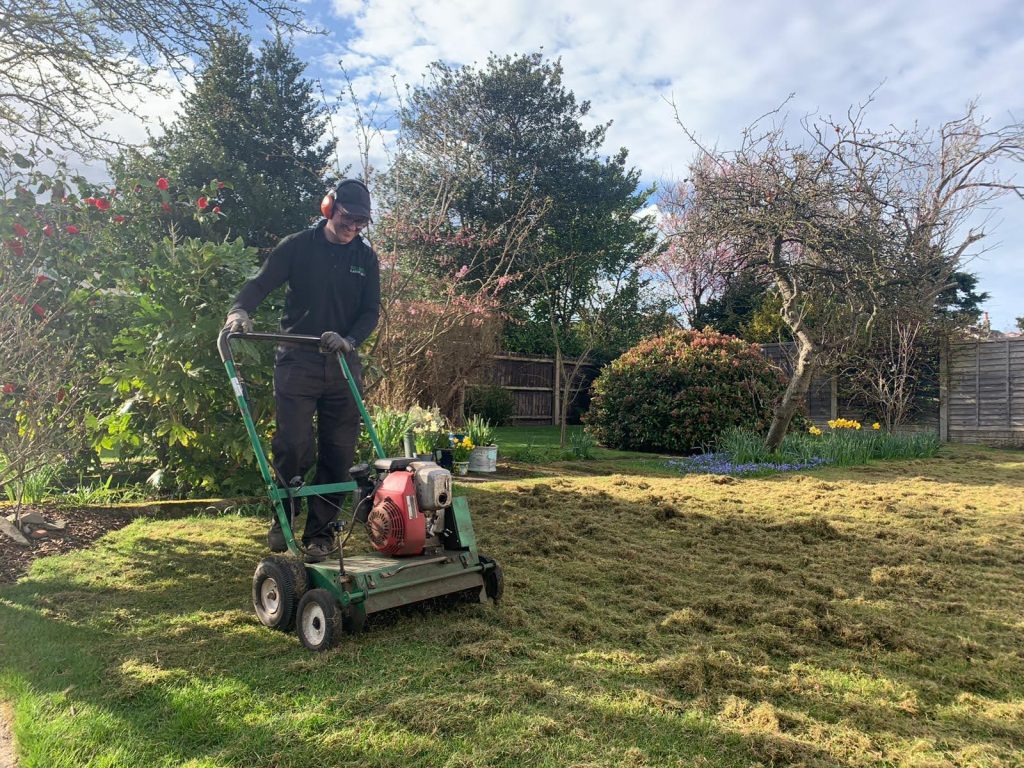-
Revitalize Your Lawn: The Importance of Scarifying and Aerating in Spring
As spring emerges, our lawns awaken from their winter slumber, eager for rejuvenation and growth. Among the essential tasks for lawn care enthusiasts, scarifying and aerating stand out as key practices in promoting lush, healthy grass. In this guide, we’ll delve into the significance of scarifying and aerating your lawn in the spring, offering insights into why these methods are crucial for maintaining vibrant greenery throughout the season.

Understanding Scarifying and Aerating:
Before delving into the benefits, let’s clarify what scarifying and aerating entail:
1. Scarifying: Scarifying involves the process of mechanically removing thatch, moss, and debris from the surface of the lawn. Thatch is the layer of dead grass, roots, and other organic matter that accumulates between the soil and the green vegetation. By using a scarifier or dethatcher, this layer is loosened and lifted, allowing for improved airflow, water penetration, and nutrient absorption in the soil.
2. Aerating: Aeration is the process of perforating the soil with small holes to alleviate compaction and enhance air, water, and nutrient circulation within the root zone. Aeration can be achieved using specialized tools such as aerators, which create holes or plugs in the soil, facilitating deeper root growth and overall lawn health.The Benefits of Spring Scarifying and Aerating:
1. Promotes Healthy Growth: Over time, thatch buildup can suffocate the grass, inhibiting its ability to access essential nutrients and moisture. Scarifying in the spring removes this barrier, allowing fresh grass shoots to emerge and thrive.
2. Enhances Nutrient Absorption: By scarifying and aerating the lawn, you create an environment where nutrients can penetrate the soil more effectively. This nutrient-rich soil fosters robust root development, leading to stronger, more resilient grass.
3. Improves Air Circulation: Adequate airflow is crucial for preventing fungal diseases and promoting photosynthesis. Scarifying and aerating facilitate better air circulation, reducing the risk of mold and other lawn ailments.
4. Increases Water Infiltration: Compacted soil can hinder water penetration, leading to runoff and waterlogged patches. Aeration opens up pathways for water to reach the roots, promoting even hydration and reducing the risk of drought stress.
5. Enhances Fertilizer Efficiency: When nutrients can easily reach the root zone, fertilizers become more effective. Scarifying and aerating ensure that fertilizers are not wasted on the surface but instead are absorbed by the grass where they are needed most.Best Practices for Scarifying and Aerating:
1. Timing: Aim to scarify and aerate your lawn in the early spring when the soil is moist but not waterlogged. This allows for easier penetration and minimizes stress on the grass.
2. Frequency: While scarifying may only be necessary once or twice a year, aerating can be done more frequently, especially for heavily compacted lawns.
3. Aftercare: After scarifying and aerating, consider overseeding to fill in any bare patches and top-dress with compost to replenish nutrients. Water the lawn thoroughly to aid recovery and promote new growth.In conclusion, scarifying and aerating are essential components of spring lawn maintenance, fostering optimal conditions for healthy grass growth. By incorporating these practices into your lawn care routine, you can revitalize your lawn, ensuring lush greenery that thrives throughout the season and beyond. Happy scarifying and aerating!
For more information or to get a free quote email rob@sharpeslawncare.co.uk
6 Longfield, Formby L37 3LD, rob@sharpeslawncare.co.uk
